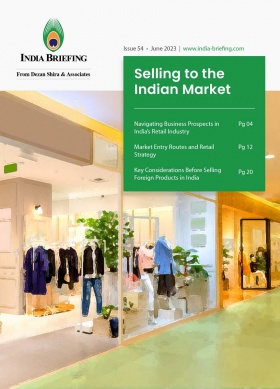India’s Commerce Ministry to Soft Launch Updated E-Bank Realization Certificate for Exporters on November 15
On November 15, India’s Ministry of Commerce will initiate a pilot launch of the upgraded Electronic Bank Realisation Certificate (eBRC), which will allow exporters to engage in self-certification. The move aims to facilitate a smoother business environment for traders. The eBRC is a key document for exporters, as it serves as a confirmation issued by a bank verifying that the exporter has received payment from a foreign buyer for the export of goods or services.
The revamped system will depend on electronic Inward Remittance Messages (IRM) sent directly by banks to the Directorate General of Foreign Trade (DGFT). Based on the IRMs received, the exporters shall self-certify their eBRCs. See official notification from the DGFT here.
Exporters in India can access various advantages and incentives outlined in the Foreign Trade Policy. To qualify for these benefits, however, exporters must submit the Bank Realisation Certificate (BRC) as evidence of their exported goods. The electronic-BRC or eBRC is an initiative to promote paperless trade, and uses an electronic platform created by the DGFT.
Relevant links to Services under eBRC can be found on the DGFT Website here: https://www.dgft.gov.in/CP/?opt=eBRC
READ: Food Import Procedure in India and FSSAI’s Latest Regulatory Changes
How the enhanced eBRC will optimize workflow
The improved eBRC system aims to empower exporters by reducing transaction time and costs. Additionally, it seeks to alleviate the workload on bankers by simplifying the reconciliation process of Inward Remittance Messages with shipping bills, SOFTEX, invoices, etc., thereby fostering a more business-friendly environment. (Software traders must fill the SOFTEX Form, which is for declaration of software exports.)
The streamlined workflow of the revamped eBRC system is outlined as follows:
- Banks handling Export Remittances will electronically transmit the IRM message to the DGFT IT system.
- Banks will transmit only the IRMs related to the Trade Account, excluding those related to the Capital Account, ensuring a focus on remittances pertinent to Goods or Services Exports.
- Relevant details from the IRMs will be accessible to the respective Importer Exporter Code (IEC) holder upon logging into the DGFT Website (https://dgft.gov.in). The linkage to PAN ensures that only the concerned IEC holder has visibility into their IRM.
- Exporters will generate eBRCs by matching IRMs with pertinent shipping bills, SOFTEX, or invoice details. Multiple IRMs can be grouped under one eBRC, or conversely, one IRM can be distributed among several eBRCs.
- eBRCs can be created for Goods Exports, Services Exports, and Deemed Exports.
- The validation of eBRC fields by the Exporter will be done using the RBI Purpose Code and other fields mentioned in the IRM.
- Banks will have access to all eBRCs generated from the IRMs they input. They will have the option to flag any eBRC for further examination or request input from the respective exporter.
Pilot launch of the improved eBRC system
A preliminary launch of the enhanced eBRC system is scheduled to commence on November 15, 2023. Subsequent to this date, each bank will establish its individual cut-off date based on their preparedness, following the completion of User Acceptance Testing (UAT). In the case of Inward Remittance Messages/IRMs dated on or after this bank-specific cut-off date, exporters will undergo self-certification with the DGFT.
READ: India Simplifies GST Refund of Exports Remittances in Special Rupee Vostro Accounts
Upgraded and legacy system to operate in parallel for the transition period
For IRMs generated before this designated date, banks will generate eBRCs and forward them to DGFT in accordance with the traditional eBRC process. Both the upgraded and legacy eBRC systems will operate concurrently until all banks complete the transition to the enhanced eBRC system.
The DGFT Website will provide a list of banks along with their respective IRM cut-off dates, serving as a reference for all stakeholders.
To facilitate swift data exchange, it is imperative that all banks integrate through the Application Programming Interface (API). Any exceptions to this rule must be accompanied by a thorough justification. Banks are mandated to complete the transition to API integration with the enhanced eBRC systems no later than January 31, 2024.
READ: Procedure for Importers to Register with India’s Special Value Branch: FAQs
- Previous Article North Indian State of Uttar Pradesh Releases FDI Policy, 2023: Key Provisions
- Next Article India’s GIFT City Strives to be a More Attractive Global Financial Hub: Latest Developments









